Just the mere act of being in Alpe d’Huez is effectively walking around on hallowed ground in the cycling world. Aside from the cobblestone finish in Paris, there’s pretty much no more famous stage in the cycling world than that of Alpe d’Huez. It’s one of the few mountain stages that even non-cycling folk know the name of. And this past week, it was home to the Alpe d’Huez Triathlon, which is a week long series of races at all manner of distances – all of which include the famous 21-switchback climb as part of the triathlon course. Living in France now, it was most definitely on my list of events to race.
In my case, I signed up for the short-course variant, which is roughly like a heavily modified Olympic distance triathlon. So without further delay, let’s dive into it!
Pre-Race:
We arrived into town the night before the race, which meant that many finishers were still making their way to the finish line of the longer half-iron-ish distance race that started some 9-12 hours earlier. Yes, the course is that brutal (for those not into tri’s, most half-iron finishers are between 4 and 7 hours).
What was cool though was that the expo was outdoors and still rocking well into the night – so there were plenty of finishers and people around to cheer on incoming athletes.
From there I executed on the fastest packet pickup ever, complete in all of 1-2 minutes. Here’s the loot from that:
With that I was set until the next afternoon, when my race would begin. Yes, I said afternoon. The race actually didn’t start till 2PM. Which I completely loved. I slept in, then went over and dropped off my run gear at the bike to run transition area.
In my case, that was simply just a pair of shoes and a hat. Keepin’ it easy!
As a point to point race, you don’t finish in the same spot that you start. Thus you have two transition areas – one that’s swim to bike, and one that’s bike to run.
Given the bike course was approximately 30KM (20mi) long, that meant you had to get to the start. And the best way to do that was actually to bike there.
It turned out there’s a second way down the mountain that puts you just above the lake, with only minimal actual riding (the rest just coasting). I say ‘minimal’ because the guide said it was “95% downhill”. I think that was reasonably optimistic.
No worries, it made for a nice warm-up ride. Took me about 50ish minutes to get down, complete with scenic drop-offs and mountains:
From there I joined the conga line of athletes crossing the same lake we’d swim in (at the far end of the lake):
I then got my bike checked by the officials – just like in the US – before getting body marked and heading into transition.
It took me only a couple minutes to get my bike racked and ready to roll:
From there it was time for a race briefing over the PA system before the swim course was opened at about 1:45PM.
The Swim:
After they let open the gates down into the water, it was like watching zebras trying to cross the river in the great migration in Africa. Nobody wanted to be in the water, and they knew only bad things came of it. In this case because the water was a chilly 14°C/57°F.
But most people did end up getting in, into a section of the lake that formed a bit of a cup. Strangely however, people then swam to the other side and sat on the rocks like sea lions.
I’ll give some free advice: From a swim performance and body acclimation standpoint that’s about the worst thing you could do.
A major reason that events are letting participants into the water earlier these days – especially colder water – is to reduce swim deaths in triathlon. By allowing you to properly warm-up, and allowing you to adjust to glacier water you not only will swim faster, but you’ll likely reduce your chances of a swim-related medical incident.
So, I spent my 15 minutes pre-start bumbling around the water swimming short little bits here and there near the front of the (imaginary) start line. Mostly ensuring my head was underwater and used to the temperatures.
At a point completely unexpected by I’d guess 98.6% of the field, a canon of sorts went off and the swim began. No count-down, no 1-minute warning…just ‘go’. Which, I should have remembered is also completely normal here in France.
On the bright side, I got some good photos of it since I was just floating taking pictures when the gun went off:
From there, I did indeed swim however. Me and 1,300 other people in a giant mass start. Yup – mass start I said, Ironman style. I forgot how much fun these are, since very few events except full Ironman races do it that way these days.
For the most part the swim was fairly uneventful. It was a bit of a triangle course jutting out into the lake. Speaking of which, this is what the lake looked like from Alpe d’Huez itself, when I took this the next day:
As is usually the case in mass start events, the turn buoys were a complete mess. Though I was impressed that virtually everyone I saw did properly go around the buoy and not cut the corners.
The course was listed at 1,200m, and while it might have been a touch bit longer than that– it did illuminate that people outside of Paris swim far better than people inside of Paris. This was evidenced last year in one of the Paris triathlons where I swam reasonably fast on the same low-swim-budget training that I was doing this year. This is I suspect largely due to the poor pool situations in Paris (15-20 people in a lane at a time), unless you swim on a team. So getting in sprints and/or hard and long sustained sets is tough.
No matter, I stumbled up off the rocks and into transition in about 23 minutes. Certainly not my fastest, but given my current swim training efforts it’s satisfactory.
With that, time to find my bike.
The Bike:
With the swim behind me I arrived into transition and pulled off my wetsuit as I ran. I arrived at my bike and completed removing the wetsuit.
It’s at this juncture that I meant to put on my Scosche Rhythm+ optical heart rate armband. Why didn’t I just put it on before the swim? Because I was stupid and forgot to put it on until after my wetsuit was already on. No worries, it wouldn’t be of any use during the swim and would only take me a few seconds in transition to put on. So I put it on top of my bike computer so I’d see it.
And I did see it immediately after removing my helmet. But for some reason I instead decided to put on my race belt (logic fail). And, as you might guess I realized this lack of strap about half a mile down the road upon leaving transition. The strap was never found in lost and found.
On the bright side – I also had a Suunto Ambit3 and the new Bluetooth Smart strap on, so I still had heart rate data from that – just not on either Garmin (Fenix2 or Edge 1000). Sigh.
In any case, from there I headed on out of transition and got onto the bike. Aside from an errant motorcycle driver who decided to walk out in front of me as I was mounting the bike, it all went smoothly.
(Preemptive note: Almost all the bike photos are simply snippets from a the VIRB action cam I had on the front of the bike, which automatically overlays my power/cadence/speed/elevation/etc data on it.)
The first 20K of the bike course is mostly all on the flats. You quickly cross back over the same lake you swam in:
Then from here you zig-zag down the backside of the reservoir retaining wall before going through a small town:
At which point you’ve got about 10-15KM of mostly flat ground to scream along. I did fairly well here, keeping per race plans and in zone. Here I was doing a fair bit of passing – in part likely because I was in aero position on a triathlon bike.
Speaking of which, some might ask why I used a triathlon bike instead of a road bike. Well, the reason is simple: It’s my primary bike. While I do own a road bike, it’s far heavier than my triathlon bike. Second, it’d be an entirely different story if the race involved descending Alpe d’Huez, for which a triathlon bike would be less stable. But for ascending only, I’m fit perfectly into my triathlon bike and it’s the one I’m most comfortable in. There really isn’t any true logic behind the idea of ‘needing’ a road bike for a hilly course, beyond people saying that a road bike increases handling (true). But again, there’s no need for increased handling at 7MPH.
Speaking of which, the start to the climb of Alpe d’Huez:
There are precisely 21 turns in the famed route up Alpe d’Huez, which gains some 3,605ft (1,099m) over the course of 13.8 very painful kilometers (8.6mi) with an average grade of 8.1% and a max grade of 13%.
I immediately put myself into the easiest gear I had and started spinning. I immediately wished I had more easier gears to work with. I was riding with a compact crank up front and a 12-25 in the back, which in doing some rudimentary gear math isn’t quite ideal (though, I suck at gear math).
From there, it’s pretty much just a slow march upwards for about 1 hour and 15 minutes. My cadence a hilariously low 50RPM at some portions, especially later on. I normally spin at about 90-100RPM.
And, this is where you start to see the true impact of not being able to consistently train on terrain like this. When I was living in DC I was able to train out in the mountains of the Appalachians almost every weekend, and after enough rides you get the hang of climbing well. Everything from the grade to the impact of elevation. Which is ultimately why there are different types of riders in a pro peloton – some great in the mountains and some not.
No matter, I just kept peddling away, past giant pink bunnies and all:
At the same point where The Girl and one of our friends hiked up to bring back beers for us last year while watching the Tour de France, there was an aide station. I found it oddly appropriate:
They had water, some sort of sport drink mix, and I think gels. I just grabbed water and sport drink mix, as I had my own gels. Some ways later around 70% of the way up there was another station.
As you hit each corner there was a sign post indicating how many turns were left, as well as a past Tour de France stage champion (for the Alpe d’Huez stage specifically). In the below case, there were 15 turns left.
Note however that these bends are only for turns that make a complete 180° turn, and not for some of the other random/numerous bends in the road. Thus, slightly deceiving.
It’s cool in that the route does go through a few small villages along the way:
After lots of climbing I finally found The Girl – up just near the main village, cheering/photographing (she was far smarter than I, and decided against doing the race):
She actually then managed to run up between a switchback and catch me again…twice, amazingly enough.
And, at this point she probably could have out-run me too. Thankfully though, the bike was nearly over. About 2 minutes later I’d wrap things up and pull up to the transition dismount line:
And then roll it on into transition:
I will point out one interesting tidbit though: You actually don’t complete the full official Alpe d’Huez Tour de France stage finish. That goes on another 200m or so up the road (in distance, not elevation climb). Why on earth the organizers just don’t go up to that famous point and turn around back to transition is beyond me (and actually really disappointing). But, as they say here in France: C’est la vie.
For fun – here’s a condensed video of the entire bike course from the VIRB. By ‘condensed’, I mean playing 8x fast, so it takes a wee bit less time to watch.

It’s probably more interesting to skip around a bit though in the video.
The Run:
It’s funny, about 1KM from the end of the bike course I thought to myself “Ya know…I’d be content with a 10/min/mile pace at this point – after all, that’s not walking, right?”.
I ditched all my bike stuff and started trotting out of transition. I would have much preferred to walk to the aide station just at the outside edge of transition to get water – but everyone else was running and I got suckered into it (damn peer pressure!).
It’s at this point that I realized that running actually felt surprisingly good. Which would make it approximately the first athletic portion of the event that did feel great.
So, I kept running.
The run course is approximately as flat as the Rocky Mountains. Or, in this case – the French Alps. I had looked at the course profile beforehand, but then as I started running I couldn’t remember if I had looked at it in meters or feet. So instead of focusing on that I just simply ran.
And this is where I passed a few hundred people. Clearly, running is my strength, since I was only passed by a single person on the entire run.
The run course was a partial out and back out into the edge of the ski area, slowly climbing up over the course of the first 3KM.
At this point you’re above the treeline, and the path was all just rocks and dirt and a mix of trail run and older mountain roads.
You reach the turnaround point at the 3.5KM-ish marker, which is one of the highest points on the course:
From here you zip back down a hill for about 800m before splitting away from the oncoming runners and climbing up again in elevation:
About 1KM of climbing later you hit the second major peak in the run, where you can see runners zig-zagging their way back up again.
Just for those keeping score at home, here’s the elevation profile of the run:
Once you hit the second peak, it’s more or less just a easy 1-2KM back to the starting area, all downhill. The perfect way to wrap things up.
I averaged about a 7:50/mile (4:52/km) pace on the run, which isn’t too bad given all the climbing (548ft). Not nearly as fast as I’d do in a normal Olympic distance triathlon (usually 6:30ish/mile, 4:00/km) – but, that’d also be on a reasonably flat run course with a reasonably flat bike course. Clearly this had neither.
Here’s me on the final turn into the finish (and the final little climb):
And then – the finish line itself (that’s not me obviously, but someone a bit later after me):
My final finishing splits were:
Swim (1,200m or so…): 24:10
T1: 3:59
Bike (30KM/18.64mi, including up Alpe d’Huez): 1:48:34
Alpe d’Huez Climb only: 1:21:39
T2: 1:20
Run (7.3KM/4.32mi trail run): 33:45
Total: 2:51:50
Post-race that had a wide variety of items – as has been the case in almost all my France races. For example, watermelon, kiwi, banana, tomatoes and more:
Oh, and a beer tap:
And of course, don’t forget the chilled tubs for putting your legs in:
After catching my breath I chatted for a bit with a few DCR readers that had just finished as well. Thanks for saying ‘Hi!’, as well as to those who stumbled into me over the course of the few days there (and on the course itself!).
Wrap-Up:
Afterwards I treated myself to a Nutella covered waffle, which seemed completely appropriate given the calorie expenditure over the previous few hours.
The Alpe d’Huez triathlon is definitely a bucket-list triathlon – sorta like the Escape from Alcatraz or the NYC Triathlon. And, like those – I’d definitely come back and race it again. I do think for the Alpe d’Huez triathlon I would however attempt to get in more climbing ahead of the race, and, I’d probably go with different gearing (not a different bike, just different gearing).
But the organizers are great and the atmosphere in the town for what is a full week-long triathlon series (races from Sunday till Thursday of varying distances) can in some ways rival that of an Ironman event leading up to the main race. Plus, the atmosphere of being in Alpe d’Huez is hard to beat from a small town perspective, everything being fully walk-able and the race being at the center of it.
So with that – thanks for reading! I’ve got a ‘5 Random Things I Did This Past Weekend’ post for tomorrow, with how we spent the rest of our time enjoying the Alps for the next few days. So lots of goodness still to come.
(For those curious on the photography side of this post, I used my little waterproof red camera in the swim & run shots, with only one photo above taken during the bike with it. And all remaining photos taken from my point of view on the bike were merely snippets from the VIRB video. Here’s all the stuff I normally use.)
FOUND THIS POST USEFUL? SUPPORT THE SITE!
Hopefully, you found this post useful. The website is really a labor of love, so please consider becoming a DC RAINMAKER Supporter. This gets you an ad-free experience, and access to our (mostly) bi-monthly behind-the-scenes video series of “Shed Talkin’”.
Support DCRainMaker - Shop on Amazon
Otherwise, perhaps consider using the below link if shopping on Amazon. As an Amazon Associate, I earn from qualifying purchases. It doesn’t cost you anything extra, but your purchases help support this website a lot. It could simply be buying toilet paper, or this pizza oven we use and love.

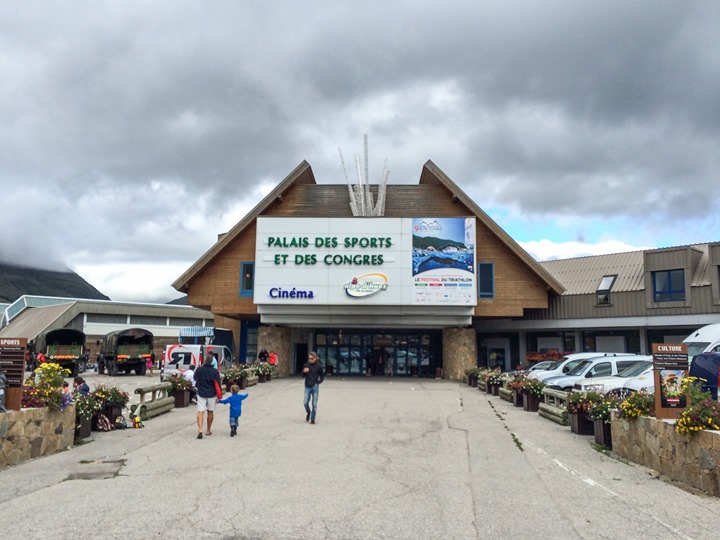

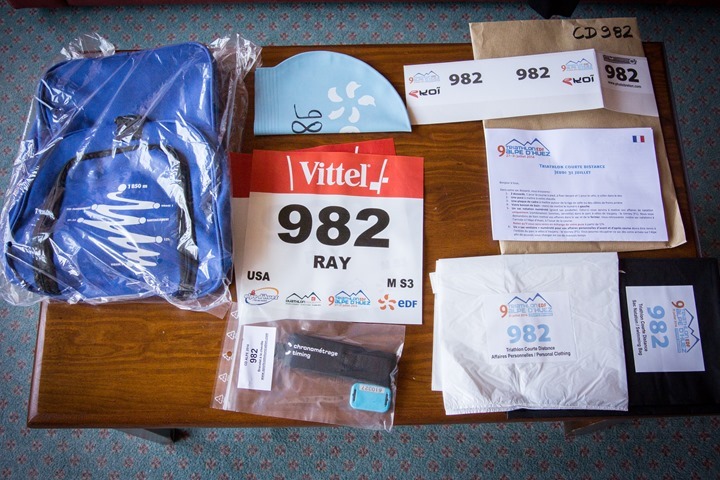
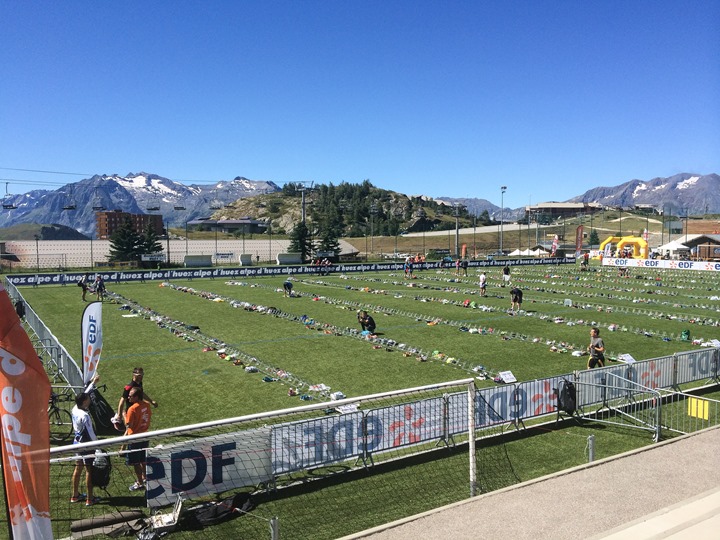
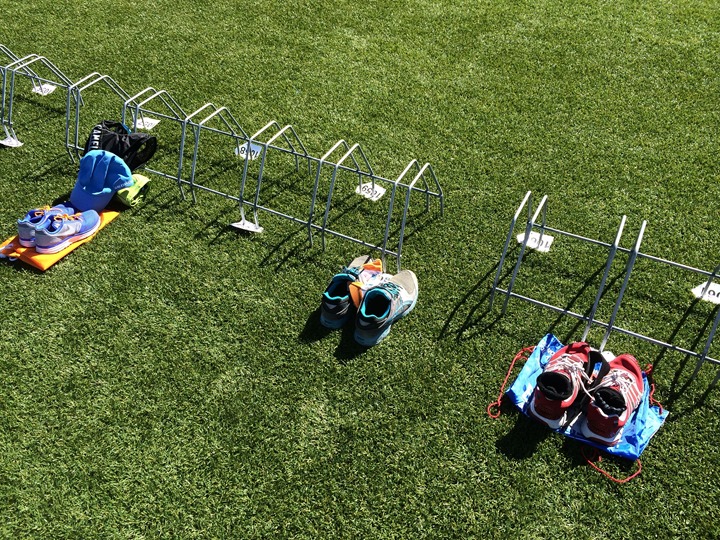

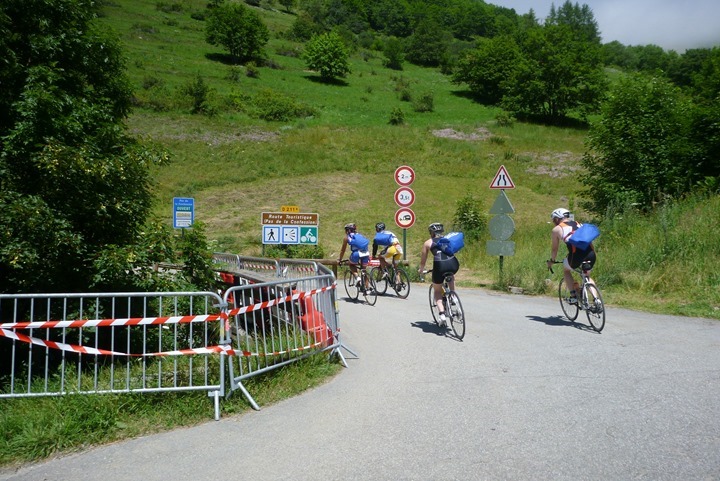
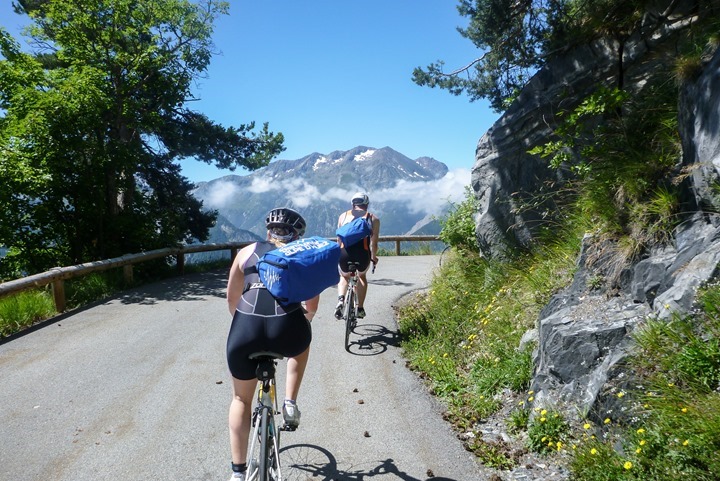
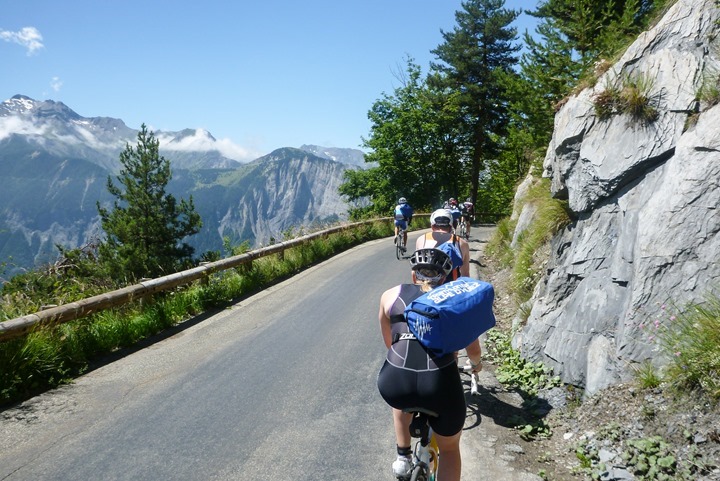

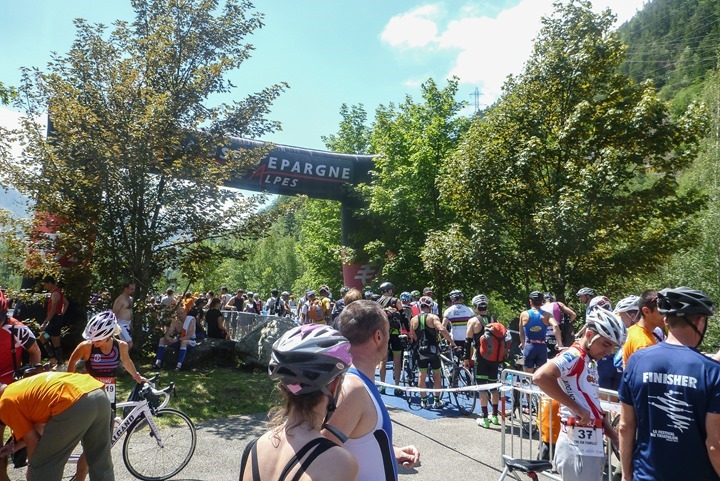
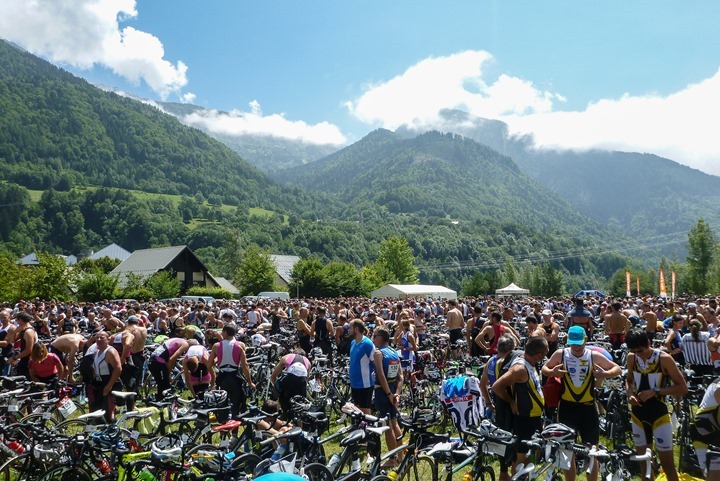
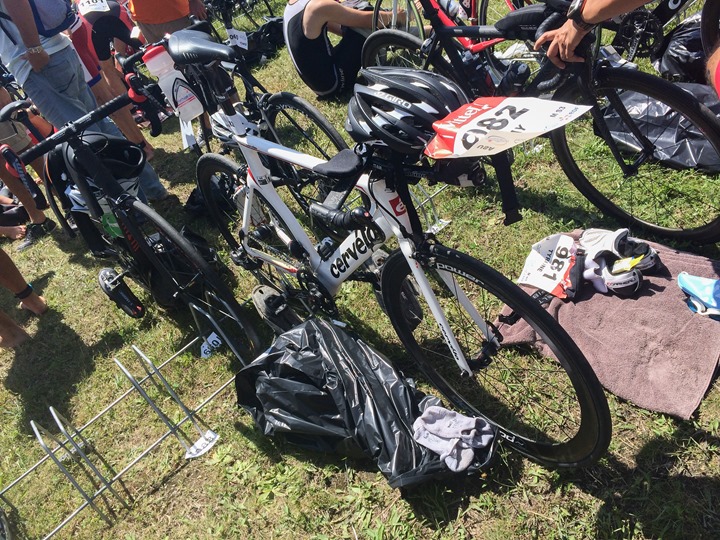
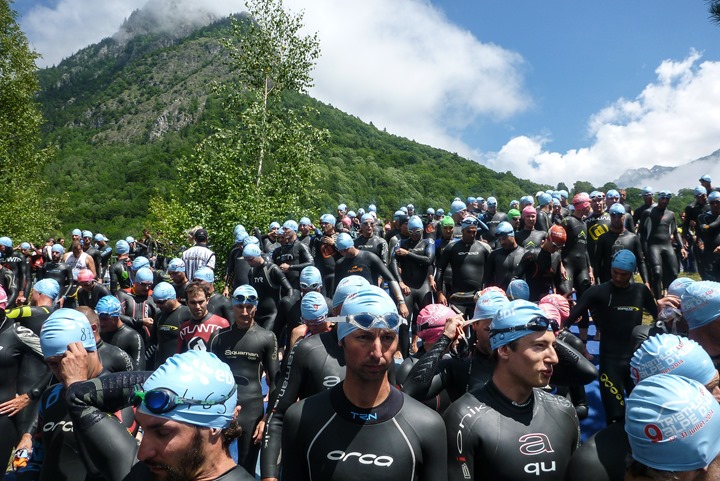
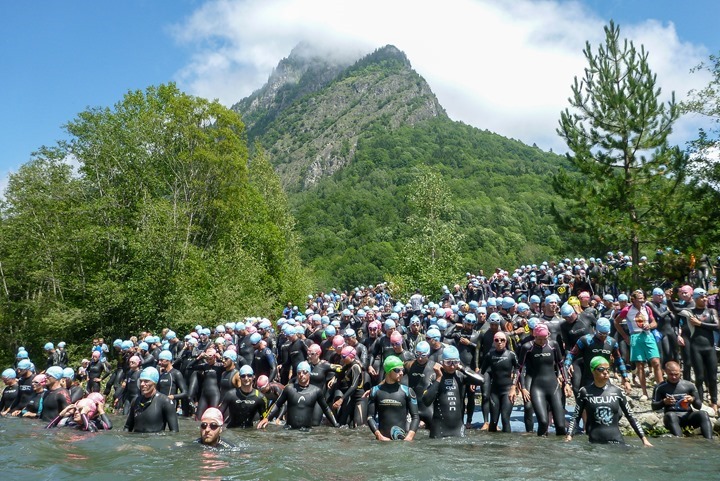
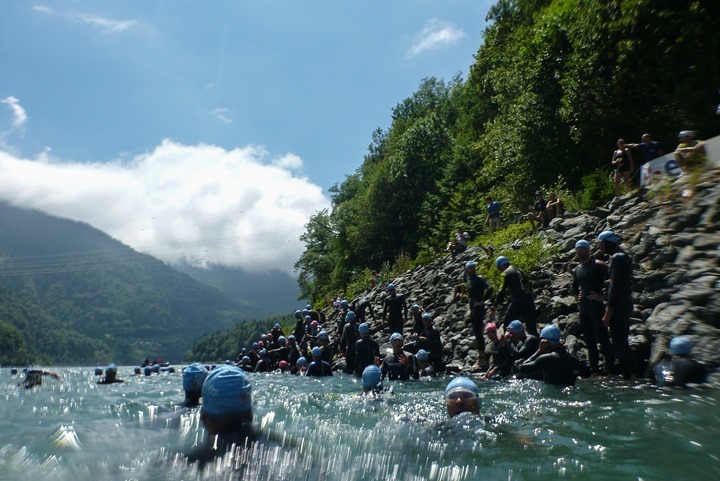
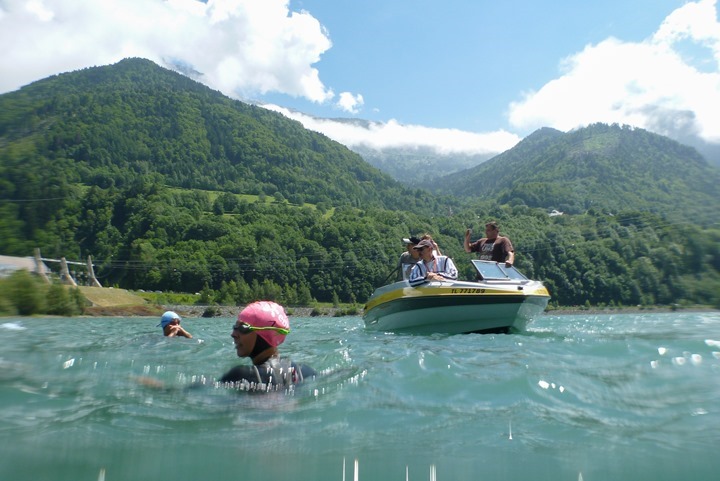
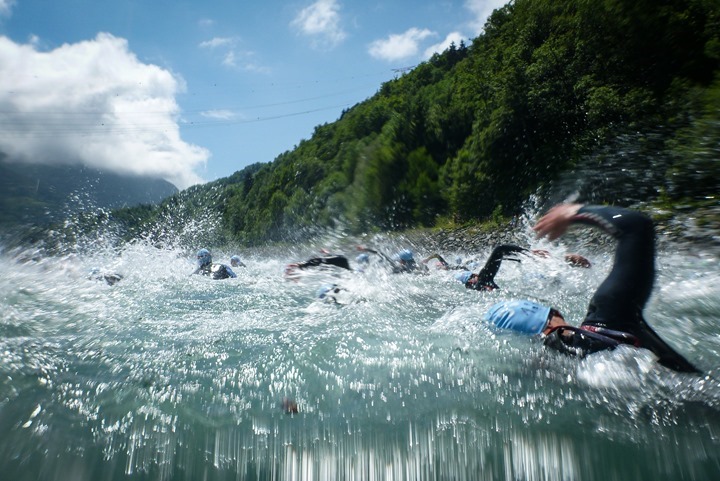
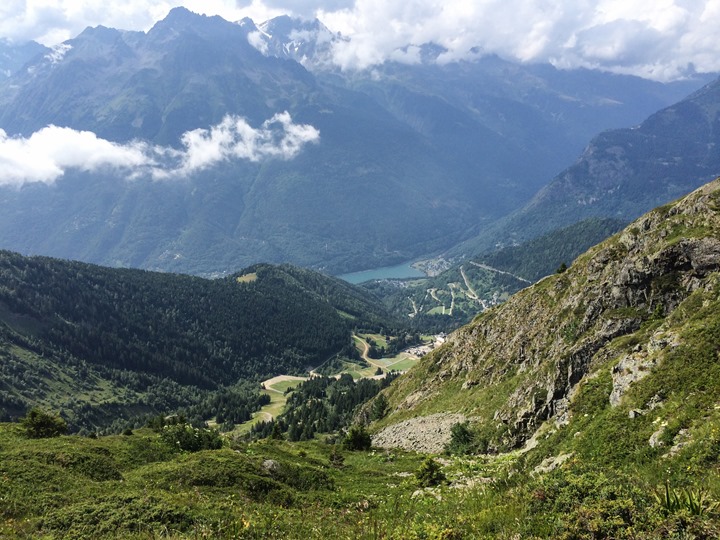
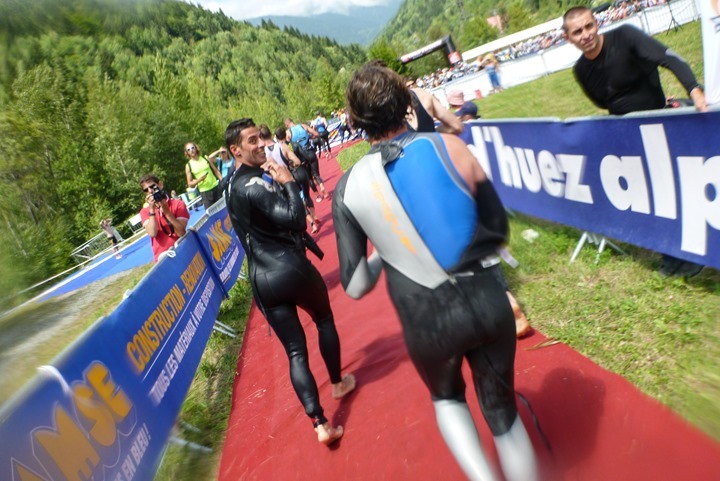






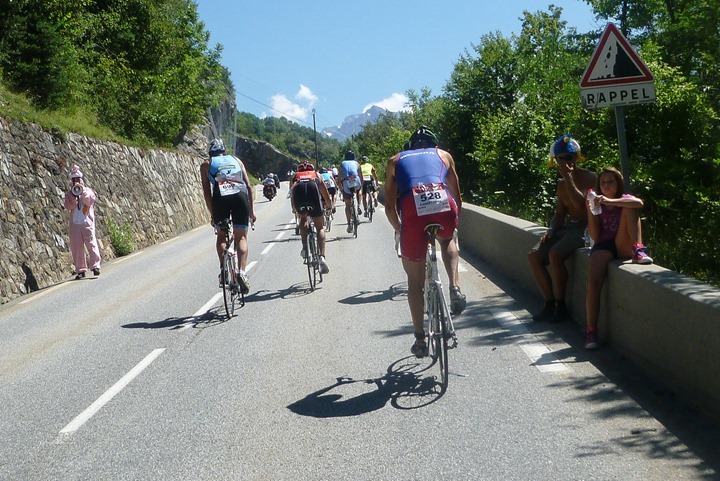




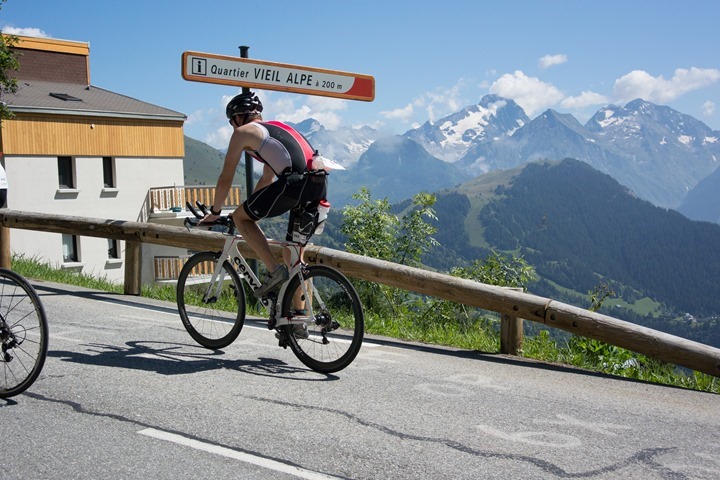


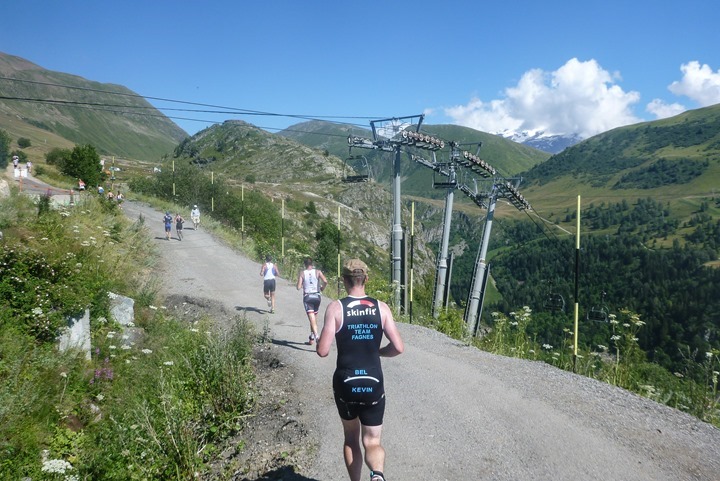
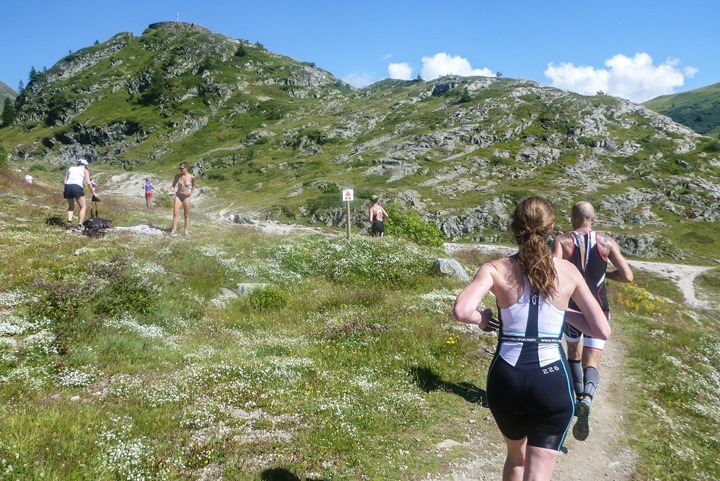
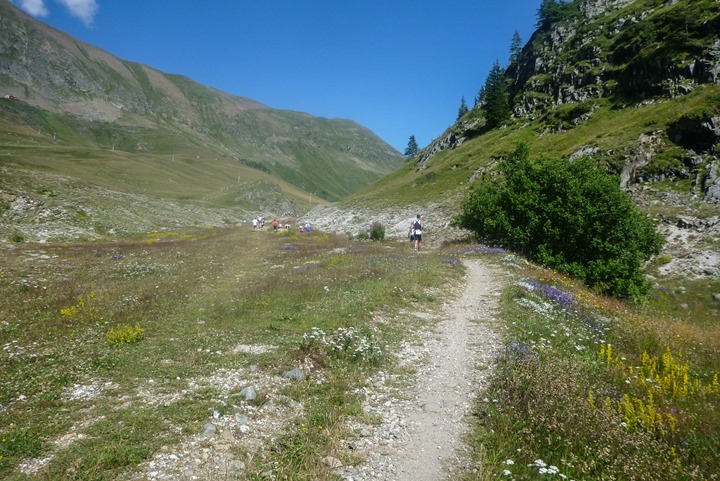
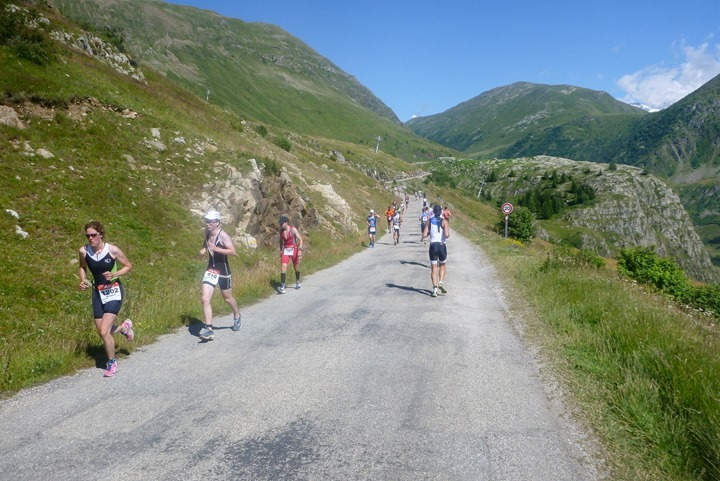

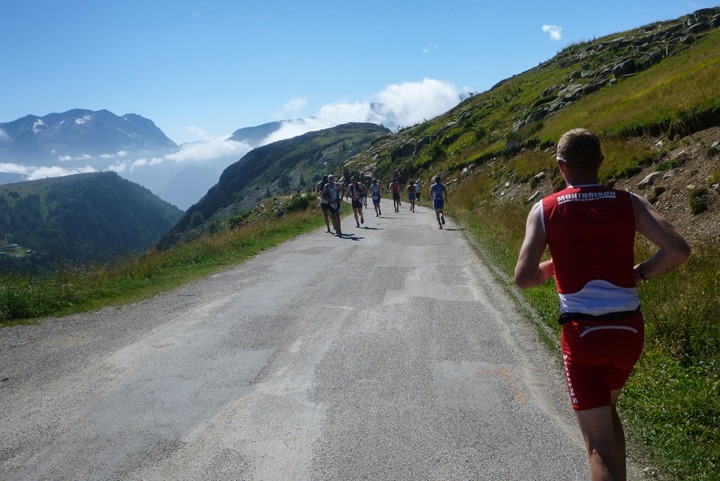
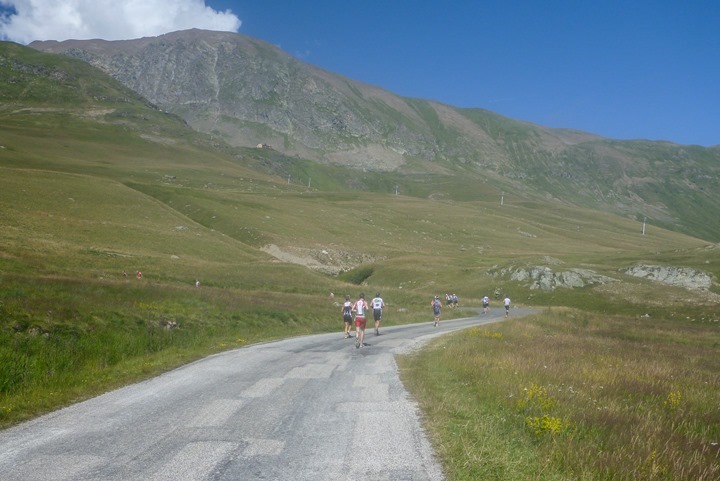

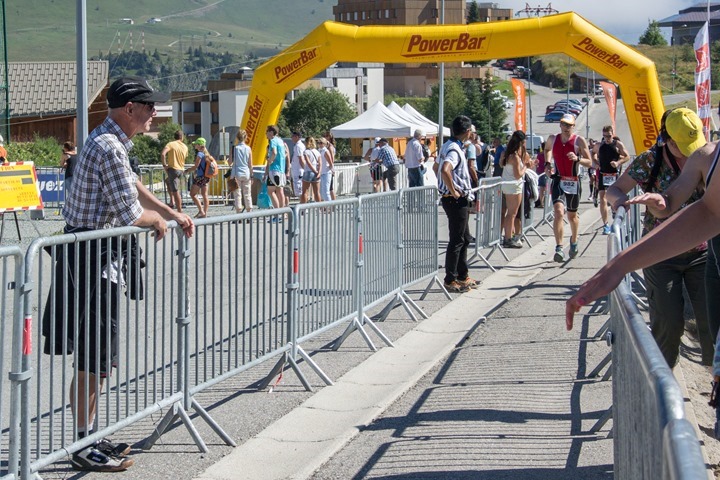
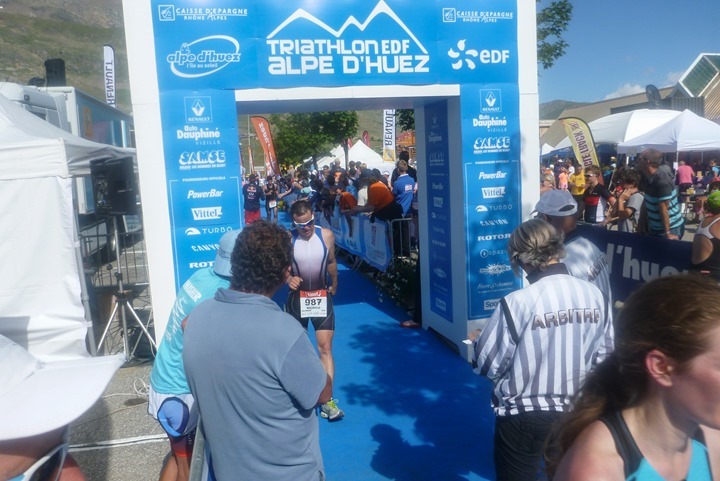
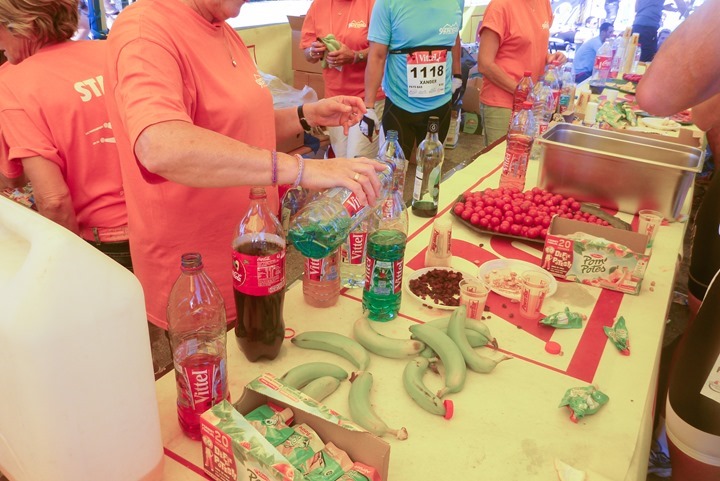
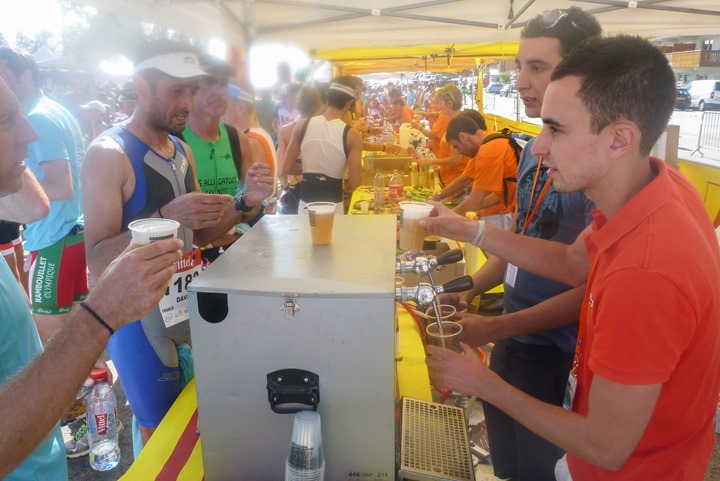
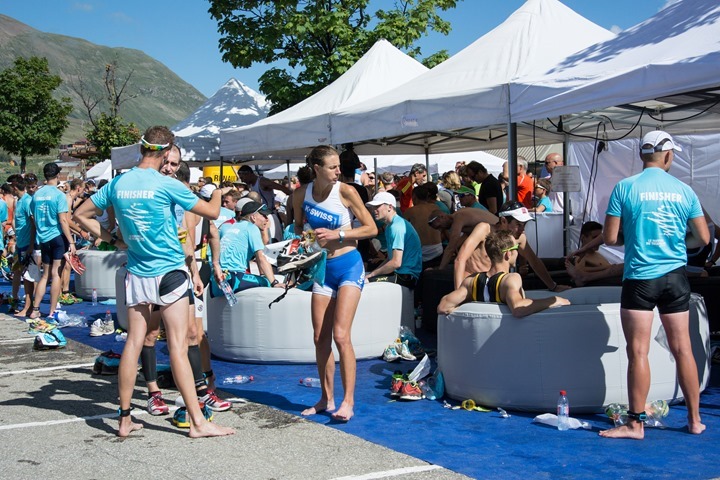

















Ray, really cool race. I lived in Paris but never thought about that one..,
Quick question, how would you replicate a bike profile (no video, just effort) in the kickr if you do not have the profile from strava? I want to do Vegas 70.3 which is 4200 feet of climb but cannot find how to replicate it. Thank you and congrats!!
The best bet would be to use something like PerfPro with the KICKR to import a course file: link to perfprostudio.com
You can pretty easily find the GPX file from Garmin Connect online for just about any past race, and then from there you’ll get the elevation data. Look for GPS units that have a barometric altimeter though, for smoother riding – such as any of the Garmin Edge series, or the Garmin FR910XT.
Note that you can get video playback with apps like Kinomap or CycleOps VirtualTraining, though I don’t know if someone has uploaded the 70.3 Vegas course yet. Some details here in this section: link to dcrainmaker.com
Congrats Ray,
I am completely amazed with the beautiful scenery. Simply awesome.
Thani
Ray what do you use for the shots in the water/run portion? goPro?
For the water/run shots I use this little camera here link to amazon.com (Lumix TS-3).
I’ve used it for years because it’s fully waterproofed and slides right into the top of my wetsuit near my neck – works perfect. I also had it in my back tri pocket, but only used it once or twice on bike since I had the VIRB recording everything.
I did find, for the first time ever actually, that I had a tiny bit of fogging on the run inside the lens in the last 1KM or so. Not quite sure why, perhaps after years of beating the crap out of it it’s finally going (the outside of the unit is completely worn down like a riverbed). Will definitely buy another one once this one kicks the bucket for good.
Well done Ray. It is on my list to do one day.
Great report Ray. You just put this on my tri-bucket list. I could be completely wrong with this, but could the run have felt good initially because of the low RPMs you were pushing for the climb? Pushing low RPMs is one of my least favorite winter time trainer sessions, and if I run afterwards, it is always a relief for me. In any case great report, and go put an 11-32 on your P3. Tony Martin did it on his TT bike (course he had 58 up front though too). Congrats!
I love that 14 degrees is cold for a swim; the North Sea is rarely above 14!
Lovely looking race & the half iron distance is on my list 🙂
you’re were lucky about weather 😉
remember that you swam with licenced people also (compared to versailles thriatlon i;e)
Fantastic race report, it brings me back. I did the race with compact chainrings and a 12-27 cassette on my bike. I needed the 27 cog nearly all the way up the climb. For anyone thinking of going, it is worth arriving a few days beforehand, staying in Alpe to acclimatise and doing the duathlon as a hitout if you have the time.
I like the new dimension that your Virb brings to your race reports; but I noticed a lot of seemingly close encounters with oncoming traffic (and slow cyclists) so I am curious, what is the general attitude there towards cyclists and races like this?
The speed of the video makes it look faster than it is, but I was very careful to stay on the correct side of the line. As for passing cyclists closely, it just depends – I call out to them and only typically pass when they make some sort of gesture that they heard me.
In general I find that Europeans triathletes have far better bike handling skills than American triathletes, largely because most of them often ride in groups on road bikes for the vast majority of their training. Group riding is a much larger part of the cycling training program here than in the US.
Hi Ray,
Glad you enjoyed the race 🙂 .
I don’t think the water was 14 °C though… the limit for a race to start in the water is 12 °C and I might be wrong but I think it was VERY close…
Oh and about the gears, if it is any help my officiel time for the climb (bottom to T2) on the results is 51mn45s and I had 34×28 on my hybrid road / “time trialed” LOOK 695 Aerolight bike (you can see it on my website if interested), I did use 34×28 quite a fair ammount during the climb and my average cadence was 83rpm, I did wish I had a 30 or 32 in the back a couple of times which unfortunately I can’t run with Di2 (would need SRAM medium cage derailleur for that), I think I’ll build my next bike for the mountains with 36/50 (I like 36 better than 34) and 11/32 cassette.
So YES you probably needed more than 34×25 for that climb and maybe more if next year you wanna try long distance on wednesday 😉 !!!
Here is my graph for the bike segment, only missing first couple of minutes and I made a user error when starting my Garmin 910XT (multisport mode had the TT bike saved in instead of the road bike, me idiot 🙁 ) : link to home.trainingpeaks.com
The VIRB really is awesome for race reports ! Thanks for sharing !
Pyf
Well done! You need at least a 28 on the cassette for the next time!
My legs hurt just reading this!!! Congrats 🙂
TheGirl picture of you on your bike looks soooo painful given how tall you are versus the geometry of the bike. Comfort always rules, maybe it is the angle of the photograph that makes it look like an awkward fit. Very cool report and congratulations!
Yeah, I thought the same thing looking at it, but I think it’s largely an angle thing. Obviously at low-speeds (6MPH), sitting up doesn’t matter. But I fit the bike a lot better at high speeds. A little more on aero testing here with my bike: link to dcrainmaker.com
How do you mount your Virb to your bike? I’m been trying to find a way to mount my gopro to my aero bars but haven’t found a way yet.
In this case I just used the stock small bar mount and put it below my left aerobar. For the GoPro just use the same small bar mount and face it forward from under.
Great race Ray. I agree with your assessment on the tri-bike. Some of the bike passes looked dangerous with oncoming cars!
I suspect it’s mostly the speed of the video. In those towns/etc people were going pretty slow.
What were the rules for drafting on the bike?
No drafting, which was enforced on the flat section. You can actually see the ref come up and hang out in front of me, which was sorta annoying because he then was blocking my passing “lane” for about 2 minutes there. He did give some ‘feedback’ to one of the guys ahead of me for drafting a bit (actually, I think he was more annoyed at blocking the pass lane, also a violation), but I don’t believe he got a penalty.
On the mountain the refs were around quite a bit, but appeared not to enforce any drafting penalties there. With 1,300-1,400 people in that short of distance (mass start), there’s no realistic way to avoid an official draft box. Though, thankfully logic prevailed as there’s no draft benefit at 6MPH.
For mass-start races many times officials will note sections that they’ll not enforce. For example at Ironman Canada in Penticton they’d always note that for the first 10-15 or so miles on the bike they’ll be more lenient to accidental drafting – but if it looks like you’re trying to draft then they’ll crack down. Which, I think is fair.
Glad to see that they are enforcing the draft rules on the flat part of the bike course. In 2011 the draft police were nowhere to be seen.
BTW your T1 was quite slow. Was this due to time spent firing up/mounting all the multisport gadgets required to bring us such an excellent race report?
I lost some time trying to get my wetsuit off, but the T1 was far longer than T2 was.
Good job Ray
Good race report, looks like a very cool tri! Enjoyed the report and photos! You need to quit showing the waffles they all look delicious.
Hi Ray! Fantastic achievement well done! I myself and taking on a similar challenge in the states in mid September. Savageman! Not sure if you’ve ever done that one, but it has over 6000 ft of climbing. I too will be using my tri bike. I was however considering switching the gearing if possible. I believe I have a 53×29 gearing in the back. I was thinking of going down to 25 or 27 teeth. I don’t think I have a compact crank. Just whatever came standard on my 2012 scott plasma tri bike (FSA Team Issue MegaExo). Any thoughts or help you can provide would be great. I am usually around 270W for FTP, but am pretty good with climbing. Thanks and congrats again!
Thank goodness the swim was flat!
Sounds awesome!
I would think the Tri bike bars would get slick and hard to climb with, you know – sweat on carbon (not the extensions)… that’s my experience.
VA says hi! Riding past your place on my way to work tomorrow! Nice and flat.
Nice race report! What did you use to mount the Garmin VIRB to your aerobars? I have the k-force bike mount for my road bike but haven’t found a good solution for my tri bike.
Never mind — just saw you answered this above.
Hi ray, I like the pictures and videos from the virb, especially with the ride data. I have the Shimano action camera and was,wondering if there,was,a,way to incorporate my data into pictures and videos like the virb does.
Reasons to love the French:
– wine is cheaper than water.
– they take a month off in summer.
– eating is an obsession (but not in a bad way).
– they have a legal 35 hour work week.
– AND THEY START THEIR TRIATHLONS IN THE AFTERNOON!
I couldn’t help but hear the Benny Hill theme tune running through my head as I watched that video…. sped up, some of those corners you took at 30mph are pretty scary looking!
Hi Ray,
Wow, that’s a nice race. Congrat!
I will do my first Ironman in less than two weeks at Mont Tremblant in Canada.
I was looking for something differents for next year. You mention NYC thiathlon. Can you give more details about it? Your impression on it?
Thx,
Stephane
Very cool. I would love to do any kind of race overseas. Mostly I just want to go overseas.
Second run picture. There is a woman in a skimpy bikini looking at a man in a bike helmet holding something indescribable as they both stand on the side of the mountain. What’s up with that?
For some things I have no explanation…
For Stephane,
I can help with NYC tri info if you would like. lew.leone@foxtv.com
Well done, Ray! 12-25? Ouch! I did Alpe D’HuZes earlier in the summer: 6x up the Alpe in a day. I used a 12-30 and a 33 ring up front on my compact – I was toast after 5 climbs and the 6th was really tough. The elevation profile of the day is hilarious: a sawtooth of 6500m of climbing. It didn’t help that it was 0c at 5am, 33c and 94% RH mid afternoon and back down to 10c by the end. All for Dutch cancer charities though – very emotionally tough day too – but a fantastic day. Thanks for bringing this back with your blog.
Good job and nice race report.
This race is great…but difficult 🙂
Congratulations Ray! Another one to add to my bucket list.
I have a quick question, now that you have climbed what I consider the three most mythical climbs of the Tour: Mt Ventoux, Cold du Tourmalet and Alpe d’Huez, how do they compare? Which one is your favorite?
Congrats Ray!
Question what’s your guesstimate of the caloric value of that waffle with Nutella?
You can’t assign a number to awesome….
Ray, there are a lot of comments out there on the stability/reliability of the Fenix 2 in multisport mode. Can you share with us how the watch perform for you in the race? Any issues similar to what have been posted in the comments of your in depth review of the Fenix 2?
It’s funny, about 1KM from the end of the bike course I thought to myself “Ya know…I’d be content with a 10/min/mile pace at this point – after all, that’s not walking, right?”.
Far from it. For some – like me, who really appreciates what you do and what you share, it’s far from it. Not all your readers fall into the fast-fast camp.
Seriously thanks for all you do – looking for a quiet trainer soon and will be checking out what you have to say
Congrats, Ray! Great report as usual, thank you!
Ray, great race report with some cool pics and videos. I’d be more than busy trying to finish this race, let alone take pictures. And some true words on swim warm-up, it’s also my experience that I get out of breath very fast on swim start when I didn’t warm up in the water previously.
How is this handled in races where you start directly from a ferry like Norseman or Alcatraz, where the water is really cold? Do you have some cold water available on the ferry? Can you flood your wetsuit beforehand?
I’m not sure about Norseman’s procedures, but having done Alcatraz – they just throw you out the door. Nothing fancy. 🙂
Ray, I did the XL version in 2009 and it was the hardest, but at the same time best and most scenic race I have done to date. Definitely want to do it again before I turn 70.
From an old triathlon geezer, one trick I use in the cold lakes here in NL (in May between 14-16C) is to take a bidon with warm – not hot – water to the start and just before the race or training (4-5 min if possible) “pre-fill” my wetsuit with the warm water. The water layer between the suit and skin is what helps to form an insulating and warming barrier. If the suit already has water in it when you enter the swim area, less cold water enters the suit and reduces the shock value of the lake water. I also use a two swim cap setup with my goggles between caps to keep my brain from freezing.
I also noticed you didn’t get the pasta and wine at the finish. I guess the XL guys put out more calories so they have more to make up.
Ahh, no pasta or wine for us! 🙁
Hey Ray! I’m in the DC Triathlon Club and after reading your race report, I can’t wait to do the Alpe D’Huez Triathlon Long Course in 2015 as my goal race. Since you live in France, can you tell me the logistics of traveling to the race? First, I’m debating whether I should get a hard-shell or soft-shell case. I’m leaning towards a soft-shell like the Aerus you reviewed, and then putting baking grates to distribute any pressure from potential crushing during the flight? I plan on driving around Europe for two weeks after the race, so lugging a hard case is probably going to be a huge pain. Second, I hear the cars are relatively small there. Is putting the case into an economy rental car going to be a problem, or will I have to rent an SUV for it? Third, I saw there are some good lodging options on VRBO.com and on the partner hotels/lodges in the race website. Do you have any recommendations? I would imagine finding a place close to the race start would be ideal, but since I will have a rental car, I also assume it wouldn’t be too much trouble to book a little farther away and then drive to the start.
Thanks for any advice you can give me!
Looks like a great venue….love the trail portion of that run! And the nutella waffle…wow!
Hi Ray,
How did you carry the camera on the run? Cool that you carry it in the neck of your wetsuit for the swim.
The race is on my list for sure.
Thanks, John
Thanks!
For the run I just hand-held it. I’m used to doing that for really long runs, so this was nice and quick by comparison. 🙂
Great report, Ray. I’m doing the Long Distance race this coming July. Excited and a bit nervous!
– r
Hi, what a great description. I did it too, only a lot lot slower than you. I don’t suppose you have a copy of the results do you. I’m doing it again this week and don’t have a copy to compare with.
G’day,
I just happened across your post while researching this on Slowtwitch forum. I want to do the Long course race in 2017. It’s been on my brain for a good few years and I’m not getting any younger. I plan on riding the course a good many times on my computrainer and also using a respiratory muscle strength trainer. (or even one of those new masks they’ve started to sell) which mat help a teeny bit towards altitude acclimization.
Seeing how the LC goes up and down a couple alps before the finish climb, I am considering bringing a roadie.
Not sure on the cold water, but I recently moved to California, so some cold ocean swims over the Winter for me! Ant additional thoughts/suggestions would be greatly appreciated!
Jake